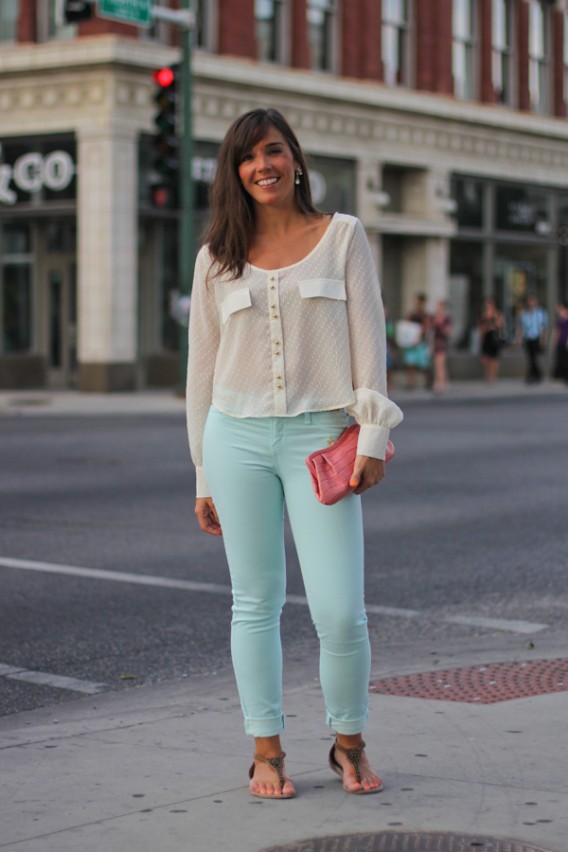
Chicago… near Cabrini-Green: Ashley
Urban geography fascinates me so much that I took a metropolitan planning class at DePaul and worked as a research assistant at the Chaddick Institute for Metropolitan Development. All those years in elementary school spent playing Sim City 2000 before bed really sunk into my brain. It’s strange to me how quickly neighborhoods change, both in the game Sim City and in real life. Ever since cities have existed, all the way back to Mohenjo-Daro (yes I am a history nerd AND an urban planning nerd so take that, haters) cities have shifted and been abandoned and reinhabited as migration patterns change. In fact, the only constant in urban planning (and all of life) is that the only constant is change. It’s still crazy to me to stand at North & Halsted, in front of the Apple Store & Crate and Barrel, and think that just a few years ago this area was home to one of the most notorious housing complexes in the nation.
The ironic thing about Cabrini-Green is that it was based entirely on renowned Parisian architect/urban planner Le Corbusier’s utopian vision for urban living. His name is right up there with Mies Van Der Rohe in terms of design influence during the mid-century paradigm shift. People back then really believed that it was better to design structures as simple as possible (I’m WAYYYYY oversimplifying this) and to live in anonymous apartment towers. You can blame buildings in Chicago like the IBM (soon to be AMA) Building on this mode of thinking (and Mies, who designed it). Clearly, the field of environmental psychology had not yet germinated. In fact, Le Corbusier wanted to demolish large swaths of historic Paris in favor of giant housing complexes arrayed in rows just like Cabrini. Can you imagine if he had succeeded into turning Paris into this? Weird how a design concept with such optimistic beginnings and honest intentions, of improving the lives of its inhabitants, could have turned out so negatively. The lesson here I suppose is that no matter what the intention or design, everything really comes down to the execution.








Thank god he didnt turn paris into a ghetto…DEAR LORD..
I studied this as well…((art major)) and jeebus, the danger that Cabrini ended up setting up. dark dank hallways filled with crime, too brutalist for my taste with al that cement, its like as crappy as UIC used to look.
I wonder if the Candy Man still haunts North Ave….he should….teach them yuppies a lesson…
WOULDNT THAT FILM BE HILARIOUS….”Candy Man 2 Gentrified Ghetto”
ID SO WATCH
@Bianca I’d love to see a Candyman 2 made about how Candyman haunts the Crate&Barrel and Starbucks hahaha. You can tear down the projects but you can’t erase the history…
It’s crazy how Cabrini was UNINTENTIONALLY designed to be the perfect high-crime area with the chain-link fencing, limited access, and isolation… thank god we know better now. Poor people need to be mixed in with middle-class and wealthier folk in neighborhoods with diversity and different types of housing. I’m hopeful that the CHA’s Plan For Transformation will be able to achieve that.
this is easily the most interesting post on a fashion blog i’ve read all year. being a bit of an urban geography enthusiast myself, i appreciate the links.
@kenda I am just a giant nerd at heart so I love to hear from readers that I should keep geeking out on weird stuff like urban planning. Thank you.
“People back then really believed that it was better to design structures as simple as possible (I’m WAYYYYY oversimplifying this) and to live in anonymous apartment towers.”
I appreciate this statement immensely. It’s hard to justify why these types of structures were ever constructed in such a manner when viewing them with our modern lens. It’s hard to imagine these structures as anything more than concrete prisons where people were merely stacked one on top of each other without regards to their humanity. To think, at one point it truly was considered “modern.”
you know cabrini was a solid several blocks away from the apple store, right?
@Sarah yes, that is why I named the post “near Cabrini-Green.” Ashley’s photo was taken right outside of the Apple Store.
Came for some fashion inspiration, paused a moment for the urban planning discussion. I am always fascinated by the whole topic, even though at times it is very painful to watch “progress”. France has a healthy respect for their beautiful historic buildings and architecture. We should learn that from them.